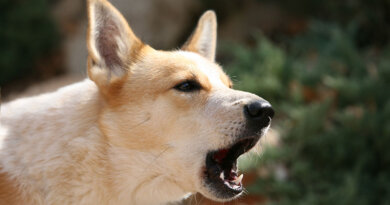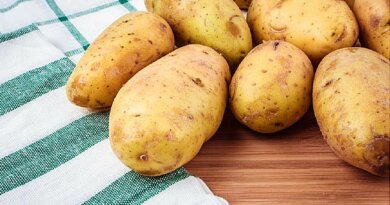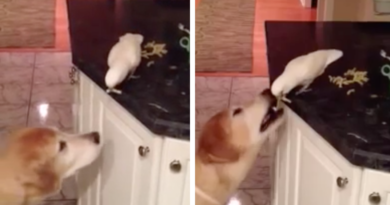Your Dog Isn’t Chunky, He’s Obese
Small Dog Obesity By Frankie Wallace |Published 10-31-19
Breaking up a handful of treats and using them
to train your dog is one thing, giving him handfuls of goodies just because
he’s begging for them is another.
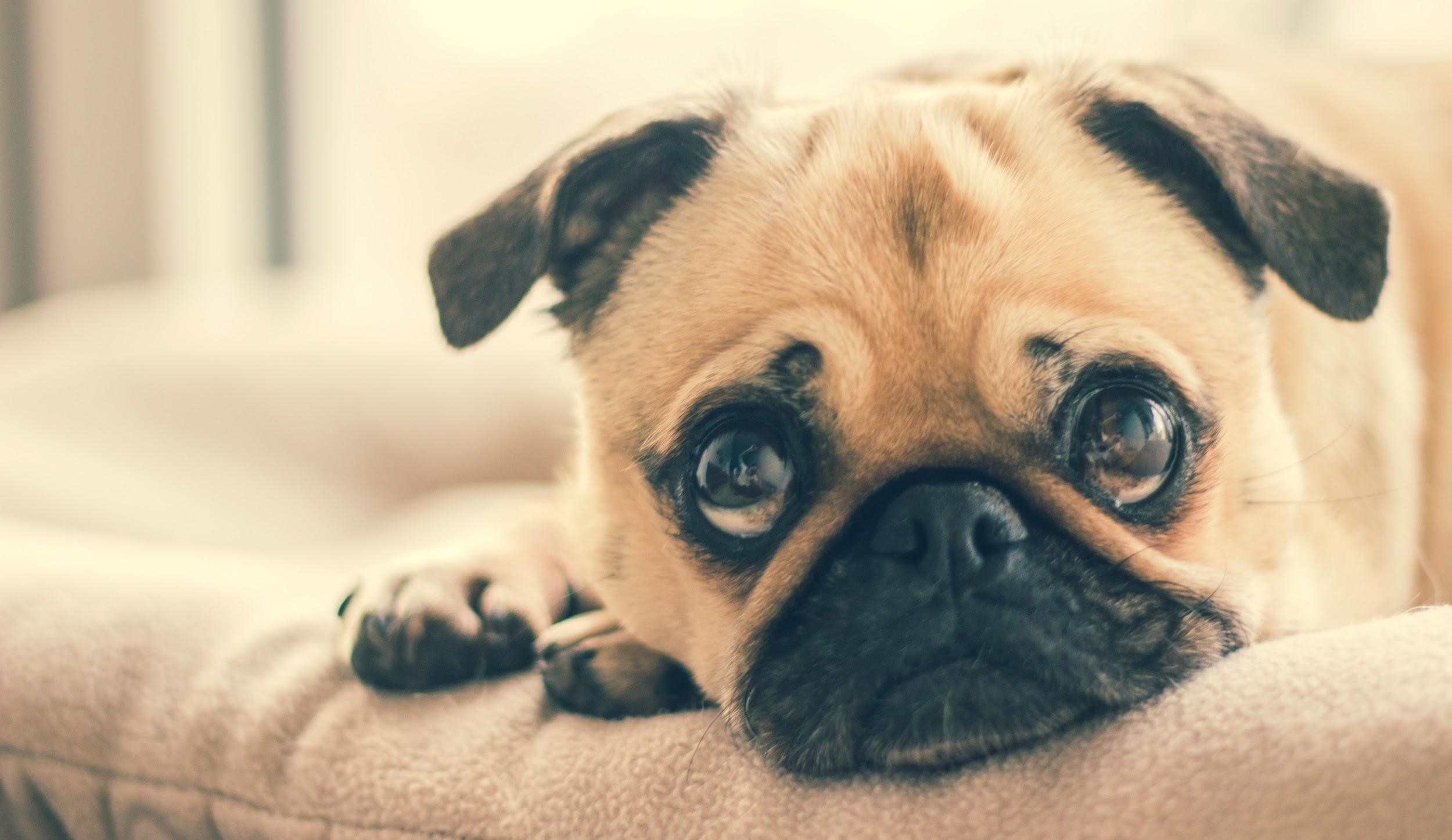 Small Dog Obesity
Small Dog ObesityThrowing your pup an occasional table scrap is common, letting her gorge on the entire family’s leftovers, on the other hand, is asking for trouble. Regardless of the specific scenario, there’s a fine line between loving on your dog and overindulging them.
The worst part of it is that you aren’t just spoiling your canine companion or letting them “put on a few pounds” when you overfeed them — you’re also hurting their health.
Why It’s Bad for Dogs to be Obese
Small Dog Obesity is an epidemic these days. Nearly 40% of American adults were considered obese in 2015 to 2016. Childhood obesity has been labeled a literal crisis with pediatric obesity increasing by a staggering 300% in the last three decades.
One of the largest side effects of this worldwide struggle is the fact that we’ve brought our pets down right along with us. As humans wrestle with things like weight gain and diabetes, their canine companions have quietly struggled along with them.
At this point, the number of American dogs that are either overweight or obese has risen to a tragic 53% of the entire canine population. This trend towards obesity has made the majority of dogs susceptible to a slew of different health dangers, including:
- High blood pressure.
- Heart Disease.
- ACL tears.
- Respiratory Disease.
- Tumors.
- Skin diseases.
- Type 2 diabetes
- Osteoarthritis (also called canine arthritis).
On top of all of that, as is the case with humans, small dog obesity tends to reduce a canine’s life, sometimes by multiple years. That can add up to a decade or more in dog years.
To put it simply, pet owners are actively harming their dogs by allowing them to become overweight.
How to Check if Your Dog is Obese
Of course, one of the first questions that arise when dealing with canine obesity is how to know if your dog is overweight or not.
While a veterinarian is going to have the best advice on whether or not your dog is obese, you can do some preliminary investigating right in the comfort of your own home.
In order to get an idea of your dog’s current shape, look at them from the side and from above. This helpful chart allows you to place your dog in one of five different categories:
● Too thin: This is when a pet is extremely underweight. Signs include no tummy fat, a decrease in muscle mass, and ribs that are visible from a distance.
● Slightly underweight: Your pet is slightly underweight when they have minimal body fat, a small stomach that is tucked when looked at from the side, and ribs that are fairly visible.
● Ideal weight: This is the perfect weight for a dog. In this case, they are still slender and have a reasonably tucked stomach, but they also have a proportionate body shape that has a modest amount of body fat on their ribs and their tail.
● Slightly overweight: If your dog’s stomach is no longer visible, has body rolls, and has a “tootsie roll” body shape when viewed from above, they’ve begun to slip into unhealthy weight gain.
● Too fat: This is where slightly chunky passes to obese. A dog that is too fat will have a neck that is wider than its head, intense fat rolls, and a stomach that protrudes from the body.
If your dog is struggling with weight gain, it’s up to you to help them get back into shape. Here are a few tips and tricks to help you encourage your pup to shed that extra weight and get back to a healthy place.
Evaluate How Much Food Your Dog Eats
The first thing to evaluate is your dog’s eating habits. Many dogs struggle with overeating and, when left unchecked, this can lead to weight gain. Start with the quantity of food being consumed. How much does your dog eat on a daily basis?
The math behind how much food you feed your dog can be a bit tricky. This is because it involves factors like their size, age, activity levels, and even the number of calories that are in the food that you provide.
Most dog food comes with a feeding chart on the packaging, but these can be misleading. It’s critical that you run your dog’s portion size by your vet in order to get their input.
Along with figuring out a good portion size, you’re going to want to set up a feeding schedule. Puppies, for instance, should eat several times a day.
Most adult dogs, on the other hand, tend to thrive on two square meals a day, although some do best with a single meal. Again, this is something you’re going to want to carefully discuss with your vet.
Evaluate the Kind of Food Your Dog Eats
Anyone who has owned a dog for a reasonable amount of time knows that it can get expensive. In fact, the costs associated with being a good pet owner can feel exorbitant at times. That may tempt you to opt for the cheapest kibble you can find.
However, if you’re already committed to , the plain truth of the matter is that you probably should dig a little bit deeper into those pockets and spring for a slightly healthier solution, since the kind of dog food you choose can have a significant effect on your dog’s weight.
Dog food must have six essential ingredients in balanced amounts:
- Water.
- Fats.
- Carbohydrates.
- Protein.
- Vitamins.
- Minerals.
With so many factors involved, it’s natural that a variety of different doggy diets are on the market, including:
- Dry kibble.
- Canned food.
- Semi-moist food.
- Dehydrated food.
- Freeze-dried food.
- Fresh food.
- Raw food.
- Homemade food.
Each of these has its own pros and cons, and once again, you’re going to want to carefully make your choice after talking with your vet. If you’re interested in getting a rough idea of how your current kibble ranks on the health-food scale, though, you can rate it using the Small Dog Place dog food rating evaluator.
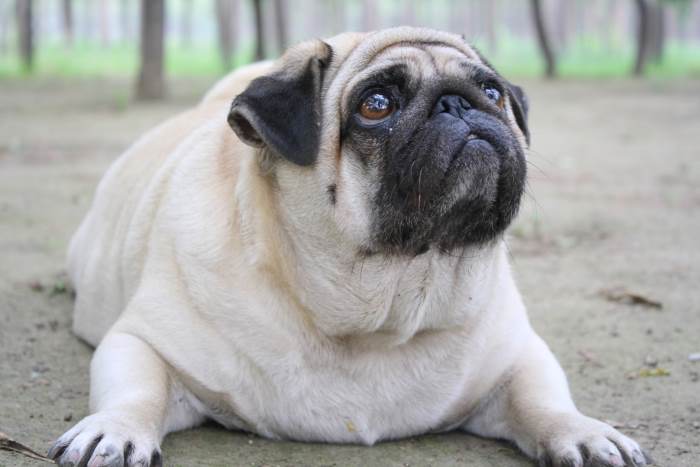 This pug is not chunky, she’s obese
This pug is not chunky, she’s obeseSmall Dog Obesity and Exercise
Along with a good breakdown of your dog’s food, take some time to reevaluate how much exercise they’re getting. Things like age, breed, and even personality can make a huge difference in how much exercise is ideal for each dog.
Even if they get the same amount of exercise as they’ve always gotten, you may need to make a change. Once a dog is overweight, chances are you’re going to need to up the ante and get them out and about a bit more in order to help them shed those pounds.
Cut Out the Treats
Another behavior you’re going to want to consider is how often you give your dog treats. If you pull out handfuls of treats each day upon your return from work, you’re likely providing your canine companion with a solid source of calories that should immediately be reduced.
Start by cutting down on the number of treats you give your dog. If the weight issues persist, look for low-calorie alternatives or consider cutting them out completely.
Instead, take the time to play with your dog and find toys that they enjoy. If they’re getting interactive one-on-one time with you, they probably won’t miss their tasty mid-day morsels for long.
Avoid People Food
Along with the treats, make sure that you’re
not feeding your dog’s excessive amounts of “people food.” Many human foods are bad for dogs, such as:
- Chocolate.
- Garlic.
- Grapes (and raisins).
- Macadamia nuts.
- Onions.
- Avocado.
The list goes on and on. If you’re used to
feeding your dog scraps on a regular basis, stop doing so in the name of their
health!
Visit the Vet
For all of the home remedies and considerations, really your first step towards bettering your canine’s health should be a visit to the vet.
Asking for the vet’s advice has come up multiple times thus far, and it’s important that you consult with a professional when considering your dog’s long-term health.
Kick off your health-focused adventures with a vet visit in order to consider your pooch’s breed, size, age, exercise, and eating habits. Consult with them on what kind of food you should be feeding them as well as how often they should indulge in a meal.
Figure out the best options for getting them exercise. As you discuss things, make sure to take notes.
Getting Your Dog Back on Track
The next time you take a look at your dog and think they’re looking a little chunky, remember that it isn’t just a cute thing that comes with age or more time spent indoors during the winter.
Weight gain is as serious with dogs as it is with humans. Small Dog Obesity can complicate their health and shorten their lives. If your dog is showing signs of obesity, book a visit to your vet and then start coming up with a plan to get moving and help them regain their health.
Author Bio, Small Dog Obesity
Frankie Wallace is a freelance writer from Boise, ID. If her spirit animal could be anything, it would be a beagle–inquisitive, and always searching for food.
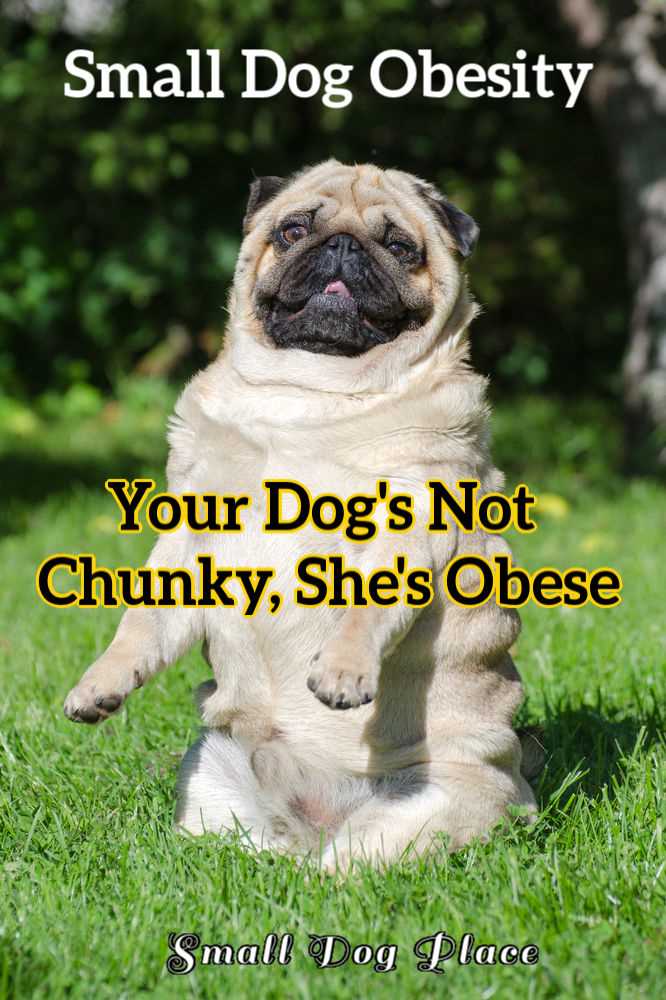 Small Dog Obesity
Small Dog ObesityDoes This Article Deserve Your Thumbs Up?
We always appreciate your support and encouragement. Your thumbs up means so much to us.

Free Monthly Newsletter
Sign Up for Our Free Newsletter and get our Free Gift to You.
my E-book, The Top 10 Mistakes People Make When Choosing a Dog (and how to avoid them)
If you enjoyed this page, I’d love it if you’d let me know. Just click the button below. Thank you.
Sharing is Caring


